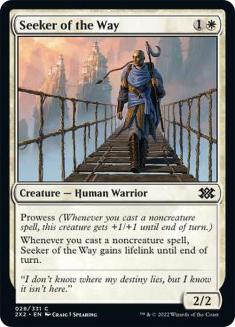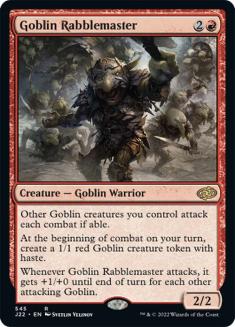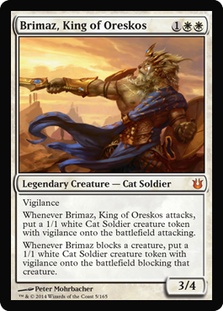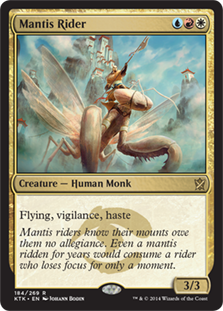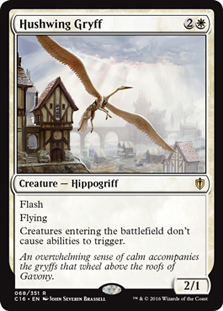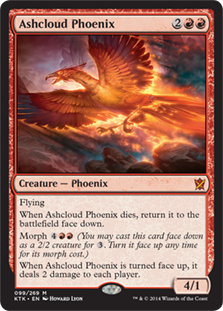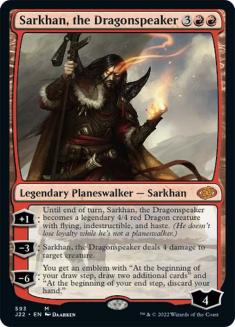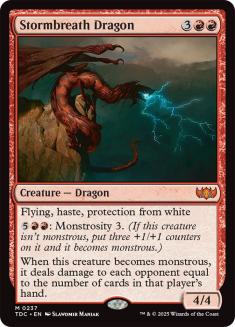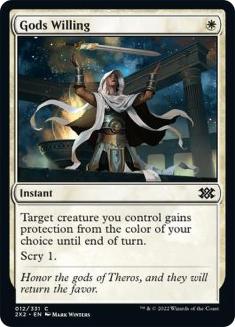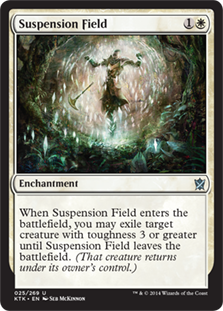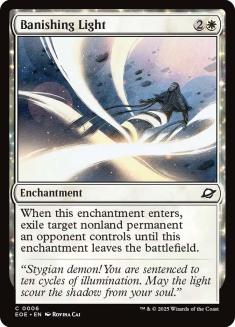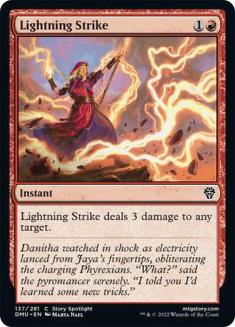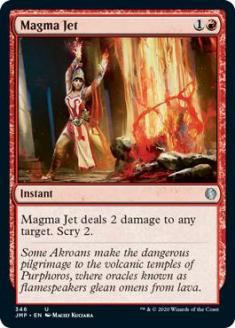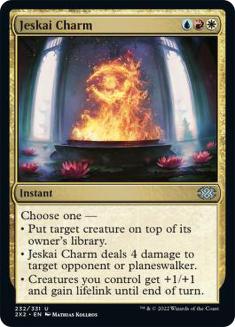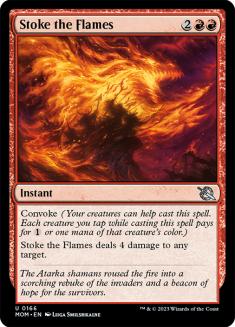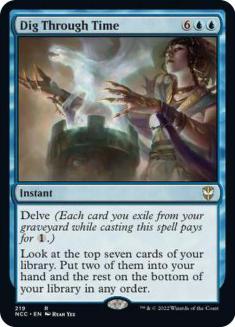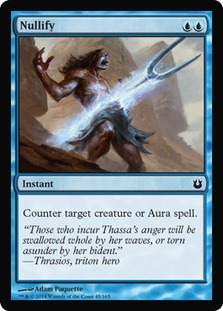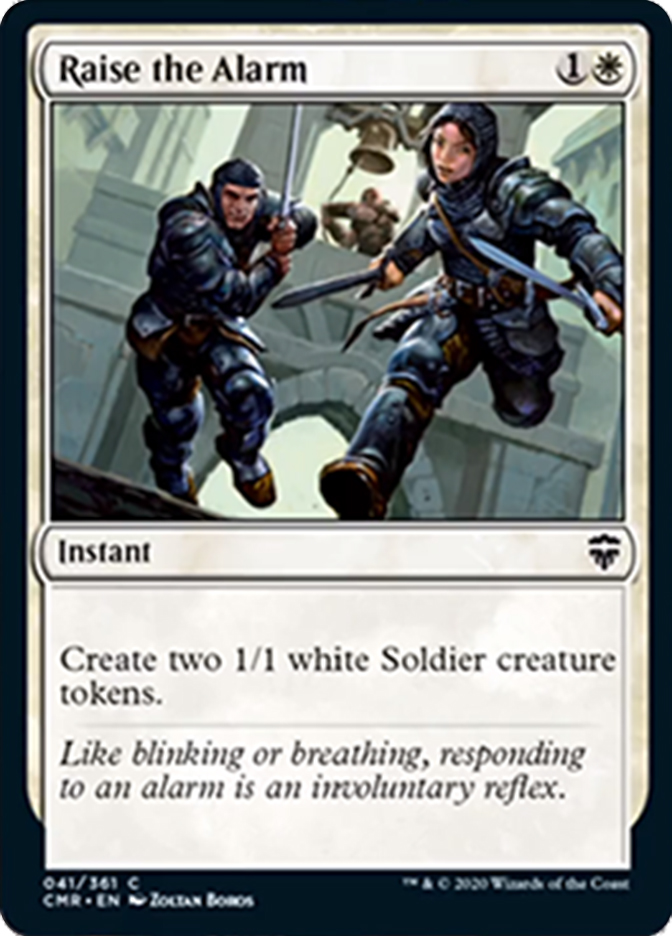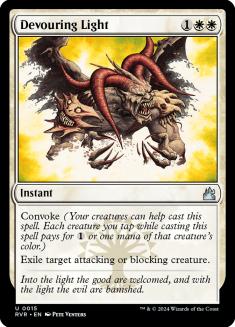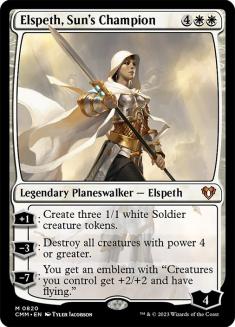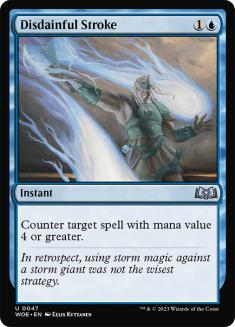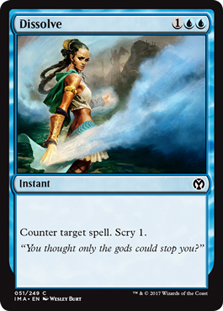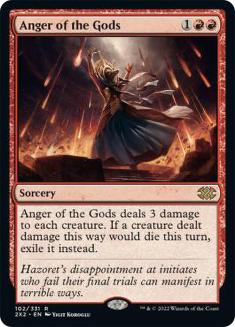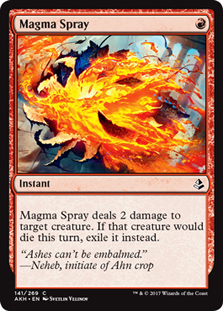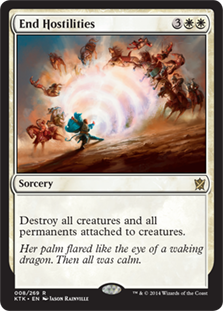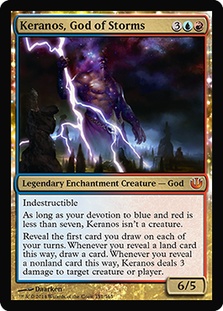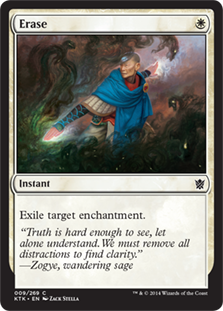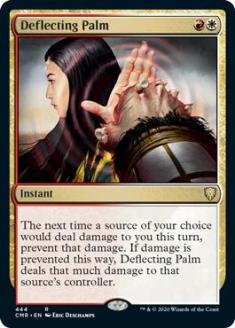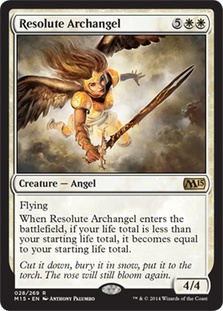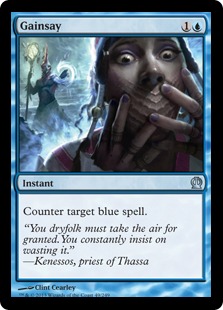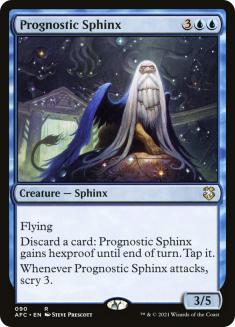It began, as it always does, days before the actual tournament started. As a person who contributed to the making of Khans of Tarkir, I was especially
invested in this Pro Tour. Was the format going to be diverse? Was it going to be fun? Did we make any huge mistakes?
When asking some of my friends how they felt about the format, they seemed to be enjoying it. Yay! Some of them even offered up what they were playing.
“I’m playing Monastery Swiftspear and End Hostilities in my deck.”
-Brad Nelson
“I’m running with scissors!”
-Todd Anderson
“I’m either playing Faeries or Dark Depths. I haven’t decided yet.”
-Josh Utter-Leyton
Not gonna lie, that last one kinda scared me.
Aside from those snippets of information, I had no idea what to expect. The Pro Tour started with three rounds of Draft, but that wasn’t really what I was
looking forward to. Khans of Tarkir Limited is great, but I wanted to see how Constructed would play out with Khans in the mix. Once the Standard rounds
started, we got a glimpse of what two of the biggest teams were playing. Ben Stark, from Team CFB, played Jeskai Aggro against Raphael Levy of Team
Revolution with their Mardu Control deck featuring Chained to the Rocks.
Of course, both of those teams were split between their deck choice, so whatever information the other person thought they might have gained for their
teammates would be incomplete. On a back table, Luis Scott-Vargas successfully combo-ed out Christian Calcano with Jeskai Ascendancy, which was a scary
thought. If one of the best players in the world decided to play a four card combo deck, it was probably because the deck was good. Surely LSV wasn’t a
crazy person.
The last match we got to see was the previous Pro Tour champion, Ivan Floch, run afoul of Jun Yung Park’s Mardu deck, although Park’s deck was loaded with
threats, unlike Levy’s. Floch’s U/B Control deck appeared flimsy and Park made rather easy work of him, which also set the stage for U/B Control’s
lackluster performance in the feature match area.
In the fifth round, there was a Jeskai mirror match. Shaun McLaren was playing the fairly stock Jeskai Aggro deck while Peter Steinaa had a little more
spice with his Jeskai Tokens deck. Admittedly, it was one of the more fair ways to use Jeskai Ascendancy, but it was one of the few decks that was unique.
In the end, unique did not win out over brute force.
As the day went on, we saw more of the same: Green Devotion, Jeskai Aggro, Abzan Midrange, U/B Control, some Ascendancy combo. All in all, it wasn’t that
different than the first week of the Open Series, which was kind of surprising. Did people have a bunch of brews that they didn’t have enough confidence in
for something as important as a Pro Tour or was the format really solved from day one?
Aggro was nearly non-existent. Sylvan Caryatid and Courser of Kruphix, the tag-team scourge of Theros Block, wasn’t performing very well. That could have
been because of the lack of aggro since Sylvan Caryatid and Courser of Kruphix are quite good against those decks. Instead, we saw a lot of fliers seeing
play.
Flying — Not just for Limited anymore!
At the end of the swiss, these were the Top 8 decks:
3 Abzan
3 Jeskai
1 Ascendancy Combo
1 U/B Control
What happened to Green Devotion? Was Mardu outclassed by Abzan? Was Ascendancy Combo a real thing or is Lee Shi Tian the luckiest person alive? With the swiss rounds complete, the distinct
lack of aggro was apparent. Despite there being “only” four unique archetypes in the Top 8, the decks looked very different and the Caryatid + Courser duo
only took up two slots.
Control managed to sneak a copy into Top 8 despite its abysmal showing in the feature match area and while Ascendancy Combo made the Top 8, it didn’t
dominate. If anything, it looked rather fair.
After the Top 8 played out, these were the standings:
1st: Abzan Midrange
2nd: Jeskai Aggro
3rd: Abzan Midrange
4th: Abzan Aggro
5th: U/B Control
6th: Jeskai Aggro
7th: Jeskai Aggro
8th: Ascendancy Combo
U/B Control and Ascendancy Combo took early exits, but two things are clear — Abzan and Jeskai dominated, and even though Jeskai played second fiddle to
Siege Rhino, both Abzan and Jeskai have a ton of options. Take a look at the various different cards seen between high finishing Jeskai decks in the Pro
Tour:
Sideboard:
This list is by no means extensive, but it does a good job of highlighting how different the Jeskai decks actually are and how you have a lot of decisions
when actually constructing your deck. Much like the Abzan decks, Jeskai has several different sub-archetypes that it can be, depending on what you want to
fight and what you expect to face.
Creatures (9)
Planeswalkers (2)
Lands (25)
Spells (24)

Shaun’s deck leans more toward being an actual control deck with his full four Dig Through Times which further support his sideboard strategy. Many people,
including Shaun, used End Hostilities as a sideboard “Gotcha!” option against Green Devotion decks, which may have been one of the reasons the deck didn’t
fare so well. It was so focused on fighting small creatures with Doomwake Giant and burn spells with Nylea’s Disciple that it allowed itself to be weak
against End Hostilities. Control wasn’t exactly popular the first couple weeks, so that was a reasonable decision to make, but it may have been the death
knell for Green Devotion players.
It’s also worth noting that Shaun was actually worried about the Ascendancy Combo deck and built his deck with that in mind. Seeker of the Way, a powerful
card against aggressive decks, was almost cut entirely to make room for maindeck Anger of the Gods. McLaren’s sideboard featured Erase, a card that was
somewhat popular at the Pro Tour, and Dissolve over Disdainful Stroke to have more game against the Ascendancy deck.
Like Shaun, other Jeskai Aggro players had a plan against Nylea’s Disciple and Siege Rhino. The different ways each player chose to fight them reflected
their playstyles well, such as Ondrej Strasky, who made his first Pro Tour Top 8.
Creatures (17)
Lands (24)
Spells (19)
Sideboard

Instead of trying to play a controlling game like McLaren, Strasky chose a more proactive angle with Hushwing Gryff, which I thought was clever. Note that
he played Stormbreath Dragon, certainly a more aggressive card as well, over the popular Sarkhan, the Dragonspeaker, which is a key pivot point in Jeskai.
Instead, Strasky wanted his threat immune to Abzan Charm, among other things, and wanted to be able to race without getting his planeswalker attacked down.
All that, combined with Ashcloud Phoenix and Banishing Light, leads to me to believe he really respected Abzan and prepared heavily for the matchup.
Next up we have Yuuya Watanabe, longtime considered one of the game’s best, despite being a tad slow to acquire Pro Tour Top 8s. With this finish, I have
hope that whatever’s been holding him back will finally disappear.
Creatures (15)
Planeswalkers (3)
Lands (24)
Spells (18)

I’ve always considered Yuuya to be the “no nonsense” litmus test for competitive Magic. He frequently plays the best deck and almost always has the best
list, even if it’s not very creative. Whether it’s Jund, Delver, or Jeskai, he knows how to build effective decks.
In this case, the only thing out of the ordinary was his use of Brimaz, King of Oreskos and Gods Willing to protect his powerful threats. While that might
be a good strategy, I don’t think it does anything to significantly impact the Abzan matchup, as things like Courser of Kruphix and Siege Rhino continue to
be a thorn in the side of Brimaz, King of Oreskos and Goblin Rabblemaster.
With either of those in play, it’s unlikely that you’ll even be able to push through Goblin Rabblemaster through for a final alpha strike. However, Yuuya
also has four Suspension Fields in his sideboard, so maybe that’s the missing link. Still, I can’t help but wonder if maybe he needed that extra something
against Abzan in order to have a shot at actually winning the Pro Tour.
Creatures (12)
Planeswalkers (2)
Lands (24)
Spells (22)
Sideboard

Team CFB had an interesting take on Jeskai with Nullify maindeck, which might have been the only deck playing that card at the Pro Tour. After talking with
Josh Utter-Leyton after the Pro Tour, he stressed the importance of having something like Nullify, as Mantis Rider and company are pretty nice on an empty
board, but if you fall behind, you are probably in a losing position.
With Nullify in the deck, two things happen. First of all, you need more blue mana and secondly, Dig Through Time gets much better as the deck is better
able to pivot between playing a control role and an aggro one. Thankfully, those two things go hand in hand, as Dig Through Time appreciates more blue
mana.
As for Abzan, I think the two different camps are clear. You can go with the Sylvan Caryatid + Courser of Kruphix route, with a lategame centered on
Wingmate Roc and Elspeth, Sun’s Champion, or you can be a little more aggressive, like Mike Sigrist did with Rakshasa Deathdealer, Fleecemane Lion, and
Heir of the Wilds.
Creatures (21)
- 4 Fleecemane Lion
- 4 Herald of Torment
- 2 Heir of the Wilds
- 3 Anafenza, the Foremost
- 4 Rakshasa Deathdealer
- 4 Siege Rhino
Planeswalkers (3)
Lands (24)
Spells (12)

Creatures (21)
- 4 Sylvan Caryatid
- 4 Fleecemane Lion
- 4 Courser of Kruphix
- 1 Anafenza, the Foremost
- 4 Wingmate Roc
- 4 Siege Rhino
Planeswalkers (2)
Lands (25)
Spells (12)

If Sigrist is on the beatdown side of things while Ari is firmly in the control seat, Thiago is right in the middle. He’s low to the ground enough to play
things like Fleecemane Lion and not play Elspeth, Sun’s Champion, but he’s still got the Sylvan Caryatids and Courser of Kruphixes of Ari’s deck.
In the end, Abzan was favored against Jeskai, and Ari’s deck was favored against the other Abzan decks by going a little bigger, so eventually he won the
tournament.
So where do we go from here?
For starters, I think it’s interesting that nobody in the entire Pro Tour had more than eight match wins in Standard. Ben Stark was 8-1-1 with the CFB
Jeskai deck and he had the best Constructed record. Oddly enough, he only went 3-3 in Limited which left him in 15th place.
Nobody broke it. Nobody has a huge edge over anyone else. Your tournament could hinge on matchups and die rolls, but I think this Top 8 is an indicator
that deckbuilding still matters, despite the fact that luck is involved.
The Top 8 tells a story, but the Top 16 tells another. Based on the feature matches and the Top 8 overall, you might think that control was mostly
demolished during the tournament, but that isn’t entirely true.
9th: Esper Control
10th: W/R Soldiers
11th: U/B Control
12th: R/W Aggro
13th: Naya Midrange
14th: Abzan Midrange
15th: Jeskai Aggro
16th: U/B Control
Note the three control decks hanging out in Top 16. Two of those control decks missed Top 8 on tiebreakers, so we could have had a very different looking
Top 8 if things were slightly different. Also, Owen Turtenwald was paired down in the last round to Yuuya and would have made the Top 8 with U/B Control
had he been paired with someone who wanted a draw.
It might look like control mostly got destroyed this Pro Tour, but it’s quietly untrue.
Creatures (3)
Planeswalkers (5)
Lands (26)
Spells (26)

In Guillaume Wafo-Tapa’s absence, we needed a new champion, and newcomer Gregory Orange, AKA The Citrus Assassin, is more than up to the task. He’s known
as the “U/W Control Guy” back home, and I can see why. A Top 8 finish at Grand Prix Minneapolis (with Jeskai Control, obviously) qualified him for Pro Tour
M15 where he finished in the Top 25 (again, with U/W Control) and qualified for Pro Tour Khans of Tarkir. With a Top 16 finish, another qualification, and
a stack of Pro Points, I wouldn’t be surprised if people start looking to Greg for control advice.
His deck has many of the same features as the popular U/B Control decks, but it finds a way to add End Hostilities and Elspeth, Sun’s Champion. The
counterspell suite is lacking, but sometimes all you need is removal and planeswalkers.
Also lurking in Top 16 is some spice!
Creatures (15)
Lands (21)
Spells (24)

This deck is reminiscent of John Sitter’s from Pro Tour M15, although it has more of a heroic sub-theme. In the last round, we got to watch this deck
basically destroy Bram Snepvangers and his Abzan Midrange deck. In that matchup, this deck looked particularly good. Obviously things like sweepers are a
problem, but Obelisk of Urd mostly beats those.
The other aggro deck in Top 16 was designed by Brad Nelson with a little help from Team Revolution.
Creatures (11)
Planeswalkers (2)
Lands (23)
Spells (24)

I’ll be honest, this is a weird looking deck, and the first time Brad was on camera he had a host of planeswalkers in play against Seth Manfield…
And Monastery Swiftspear, Titan’s Strength, and End Hostilities in the graveyard.
Needless to say, the Twitch chat was rather confused.
Despite the… um… interesting deckbuilding decisions, Brad’s deck actually looked pretty nice. He was kind of like a Jeskai Aggro deck except with
better mana, access to Chained to the Rocks, and Hordeling Outbursts that were good against spot removal and protected his planeswalkers. I’m sure you’ll
be able to read an article on the deck soon.
The last weirdo in Top 16 was piloted by midwesterner Adam Jansen.
Creatures (16)
Planeswalkers (11)
Lands (24)
Spells (9)

This deck was pretty reasonable last season, but despite not really benefiting from Khans of Tarkir and its focus on wedges, Jansen’s deck performed
admirably. Sarkhan, the Dragonspeaker and fetchlands were the only cards he played from Khans! With how big of an impact Khans made on Standard, that’s
pretty insane. As it turns out, mana acceleration, planeswalkers, and removal tends to be a good combination regardless of what sets those cards came from.
Watching the Pro Tour was great, and it looked like people were enjoying the format, so mission accomplished! Where we go from here is anybody’s guess, but
I wouldn’t be shocked if Abzan and Jeskai fail to stay on top. After all, there’s a rather large target on both of their heads.

